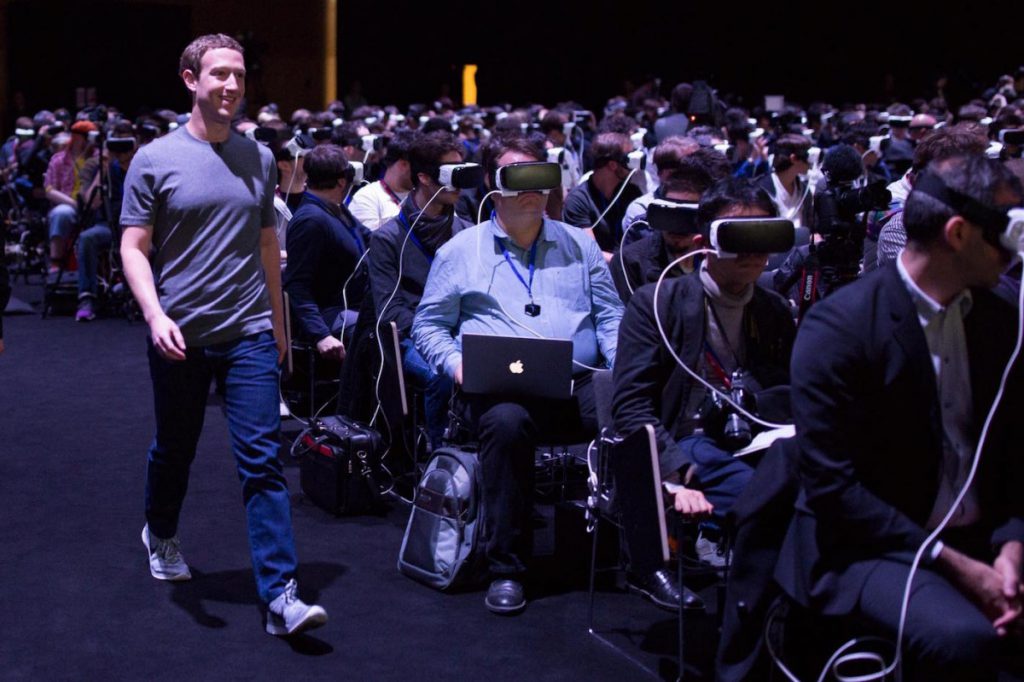VR is the use of computer technology to create a simulated environment. Unlike traditional user interfaces, VR places the user inside an immersive experience. Instead of watching a screen in front of them, users are “immersed” and able to interact with 3D worlds.
This is obviously a pure thought exercise; there are a number of things here which would likely be different in actual, not hypothetical, implementation. But the point here is: social media in VR has to be different, if only because the way we relate to one another online has to be different. Social media in its current state has resulted in fractured and less personal social interactions. We may be connecting with more people that we used to in the past, but those connections are nowhere near as deep and personal as they have been for generations. Think about this for a minute, when was the last time you had a truly meaningful interaction online? For me, the answer is when I had a face-to-face conversation in a cartoon forest with a heart wearing a top hat in a social VR app called Convrge. As silly as it may seem from the outside, Convrge and all of these other social VR apps really do increase the level in which you are immersed in conversation.
Why? It’s simple: the addition of body language. According to one famous statistic in the communication field, 93% of all communication is nonverbal.
In this Virtual Reality Industry Report 2016, you can see that 70 million Virtual Reality devices will be sold in 2017. The report also highlights that from the 76 % of users who are willing to test Virtual Reality at home, 37 % prefer to opt for the computer and 32% use their smartphones, while only 7 % are interested in playing on their game console.
The kick-off of the exorbitant figures of Virtual Reality in 2014 gave Facebook to announce the purchase of Oculus. Mark Zuckerberg disbursed 2.000 million dollars (1.450 million euros) to gain control of the company that developed virtual reality glasses for video games. “We are making a long-term bet for when the immersive, virtual and augmented reality will become a part of everyday life of people “, Zuckerberg stressed after the purchase, and added that Oculus ” is different from anything I have experienced in my life. ”

Brands who are jumping into the Virtual Reality World
Iberdrola
Few months ago, Iberdrola in its digital transformation, offered its shareholders the latest developments in the digital world, giving a new sign of its commitment to innovation. Thus, those shareholders who wish to enjoy, for example, a pair of glasses of virtual reality that will take them to the world of Iberdrola, the relationship of the company with the most clean and efficient technologies, having the most respectful experience with the environment.
So Iberdrola presented their own project of VR (virtual reality) in conjunction with the company New Horizons -first Spanish content producer for virtual reality glasses, in the offshore wind complex West of Duddon Sands, the first of its kind a Spanish company launches worldwide.

El País
With the advent of virtual reality, until now used for video games or some ads, the Spanish newspaper takes a step further in that, to transfer their readers to the scenes of the news increasing the feeling of living that story. “Fukushima, contaminated lives” is the first report in El Pais (with the collaboration of New Horizons VR, the Spanish company mentioned before and Greenpeace) that uses this new narrative format and will allow a much more immersive experience and feeling from within the newspaper stories.
Google said: ‘Your room is your canvas. Your palette is your imagination. The possibilities are endless. ‘The Californian web giant said its Tilt Brush app enables users to paint in their own virtual studios and create 3D works of art within a virtual world.
Running through HTC’s Vive headset, users can paint and create using the HTC hand controller for brush strokes and as a virtual paint pallet.
Volvo
Buying a car is a complicated process, so VR could really enhance the customer journey within the auto industry. VolvoReality gave potential customers a chance to virtually test drive its XC90 SUV in November 2014, experiencing the car from a driver’s perspective. The experience was optimized for Google Cardboard, but the brand made sure that it was more widely available, as well. VolvoReality could be watched as a video on a regular smartphone – and its teaser has got 195,000 views on YouTube.
https://www.youtube.com/watch?v=Wuln2bJkp1k
Topshop
TopShop offered members of the public a unique front-row view of their exclusive fashion runway show during London Fashion Week using a 360 panoramic video stream. Lucky competition winners got to experience this in a special pop-up space in TopShop’s flagship London store, providing great visibility. The experience won ‘Project of the Year‘ at the BT Retail Week Technology Awards 2014 and Best Hybrid Event / Best Virtual Event at the 2014 Event Tech Awards.
After reading all this we can imagine why VR Marketing campaigns are so successful:
VR solves a huge problem marketers have about engagement and awareness for the following reasons:
- Immersive– users wearing a headset are completely immersed in the content meaning fewer distractions and more attention to the message.
- Impactful– the intensity of a VR experience is greater than traditional media generating strong emotions.
- Memorable– our brains are built to remember events linked to locations, this means that VR experiences have a longer trace in the audience’s memory.
- Novel– with high media and public interest in VR early adopters can benefit from favourable media exposure.
The world is becoming a global society and VR is the next big step in taking us there and it´s shaping the future of brand experience, don´t you think?


